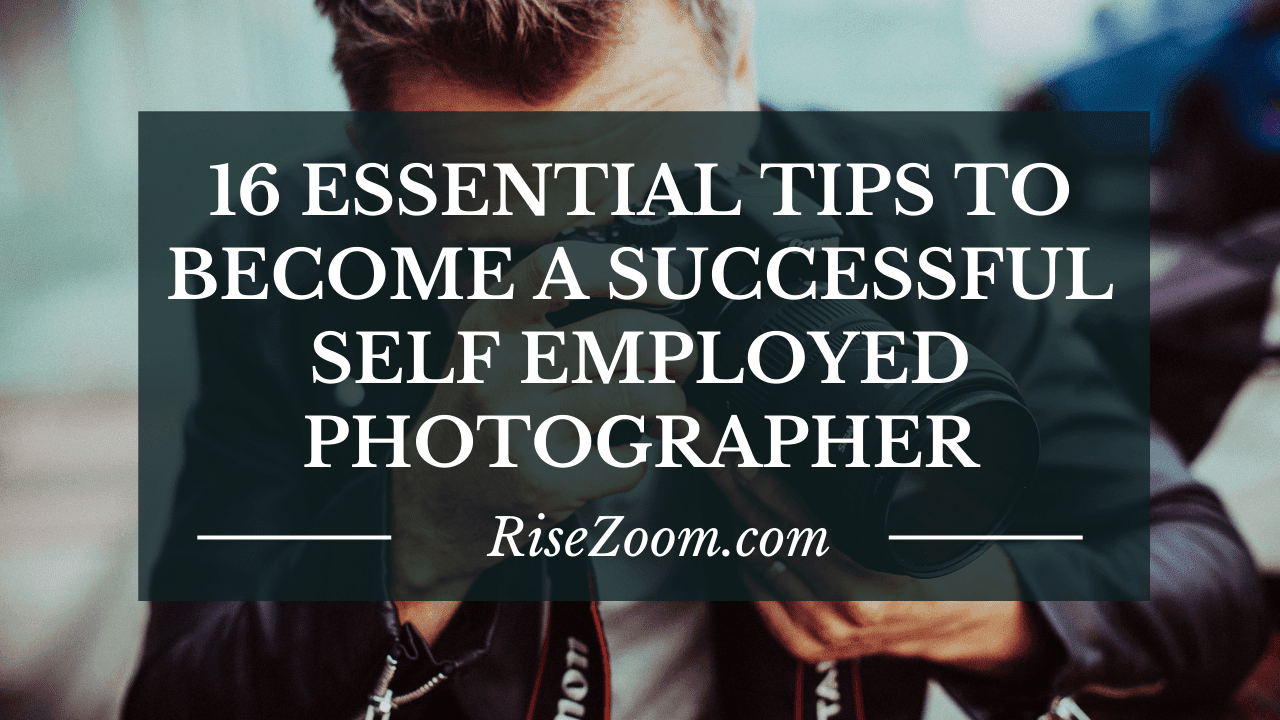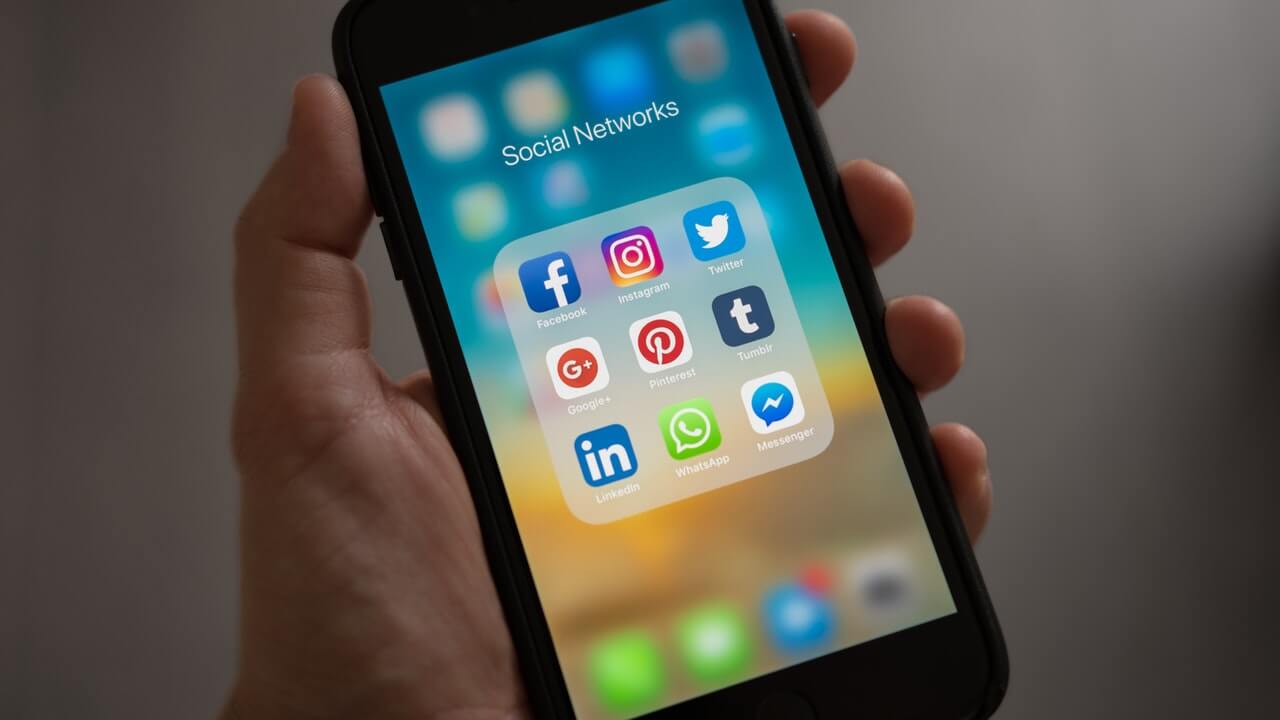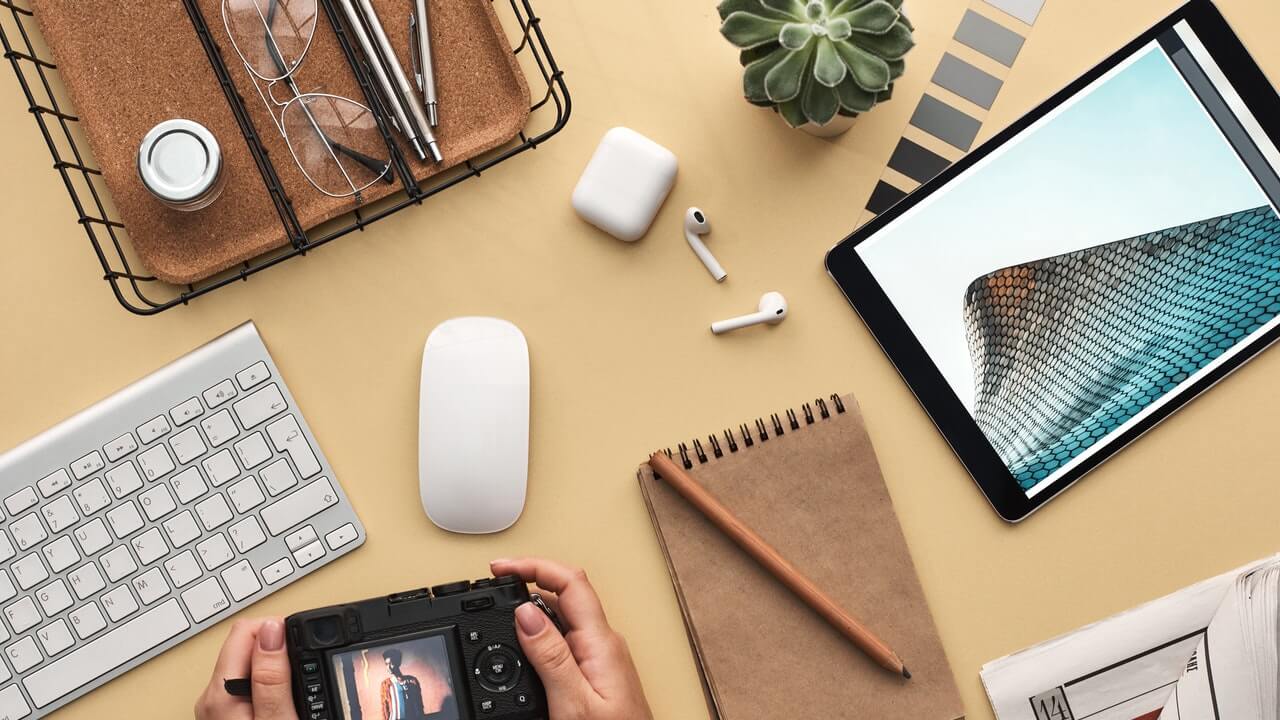Working successfully as a self employed photographer - earning enough money with the hobby to be able to make a living from it. Who doesn't dream of it? In the end, you need more than just the ability to take good photos to survive. I've been working as a freelance photographer for almost two years and had to learn (sometimes painfully) what that means.
Are you also considering working full-time as a professional photographer or are you just starting out? Then you are exactly right here. In this post I want to give you a few tips and lessons from my self-employment that I would have liked to have known or followed in advance.
16 Essential Tips You Need To Become A Successful Self Employed Photographer
1. BUILD DIFFERENT PILLARS OR: WHAT CAN YOU EARN MONEY WITH?
Many employees only have one main job that they concentrate on. But woe, this one falls away one day. Then panic quickly breaks out because the only source of income collapses.
It's often the same as a freelance photographer. However, a customer does not always have to leave, for example - there are often simply seasonal fluctuations. A simple example: In winter there are hardly any weddings that need to be photographed. Outdoor shootings are also booked less because it is often too cold. In addition, for product photographers, for example, there are products that depend on the season.
To cut a long story short: There are always phases in which less sales come in or you will have a kind of "idle".
 |
| Make a plan for what you want or can earn money with |
So think about what you can do during this time to still earn money. This is also part of a business plan to think about how you can earn all money with your existing skills in a certain business area. What do you do with your time when you have not booked a booking and have actually processed all current orders?
So it makes sense not only to work regularly for different customers, but sometimes also in different industries. I myself not only work as a photographer in various fields, but also as a designer (which I originally studied) so that I always have several pillars. That way you make yourself less dependent.
2. PROFESSION PHOTOGRAPHER: BE THE SPECIALIST IN SPECIAL AREAS, BUT NOT THE MAN / WOMAN FOR EVERYTHING
Different areas or pillars are definitely something positive. But now it's still a matter of carefully separating these areas. It is comparable to that of a doctor: Anyone who has problems with their eyes wants to see a specialist or ophthalmologist and not a general practitioner or dermatologist.
As a photographer, you should therefore show what you are the specialist for. The visitor to your website must be able to clearly see at first glance what he is getting from you. If you show photos of newborns and weddings on the home page, this can still pass as a “family photographer”. But if you show photos of airplanes, landscapes, architecture and high-gloss products in addition to babies and bridal couples, it can be difficult.
Show yourself as an expert in a certain area. If necessary, you have to separate the whole thing through different websites. So people have more confidence because they feel that they can definitely get what they are looking for here.
3. GET YOUR CASH FLOW UNDER CONTROL
Even the richest people can go into debt. At the end of the month, it doesn't matter how much you make, but how much you keep. Anything you don't spend may not have to be earned in the first place.
I myself live in a rural region, for example. This means that rents, among other things, are quite cheap. The total cost of living is simply lower. On the other hand, the price level is of course a bit cheaper.
So it is important to first find out what you have to pay monthly. What goes in, what goes out?
 |
| Keep track of your income and expenses |
In the next step, you can cross out certain issues with the red pencil that you could actually do without. I myself am extremely allergic to monthly subscriptions and installment payments, so these are really reduced to the bare minimum. For example, if there is the option between monthly payments and a one-off payment, I usually prefer the latter option. Keep your monthly costs as low as possible and you can live more relaxed. This mainly relates to private expenses, as these are not deductible. More on that later.
Especially as a self-employed person, you should always have a sufficient financial buffer for unforeseeable expenses and be able to bridge a few months in an emergency.
This also means that you don't forget that the money is not yours right away. You keep hearing how much money you earn as a self-employed person. Usually such sentences come from employees who have not yet dealt with them further. They just hear some hourly or daily rates and compare them directly to their net income.
The important difference is: As a self-employed person, you don't get taxes and insurance deducted from your salary in advance, as you would with an employee. You first get everything gross and then you have to pay your taxes, insurance, etc. yourself. In the end it is often not quite as rosy as initially hoped. So keep track of how many taxes you have to pay at what time.
4. REINVEST IN YOUR BUSINESS
Apart from these taxes and running costs, there are investments in the business. And you should do this regularly. This is the only way you can stay competitive in the future. In addition, business investments are tax-rewarded and you can reduce your tax burden by reporting such expenses.
This not only includes having good hardware and software to work with (this often saves a lot of your time, which you can invest in more important things). As a sole proprietor, you are your own business. So invest in your education too so that you don't stand still.
Time is money - that's why you should make it possible for yourself to work as easily, quickly and efficiently as possible by investing.
As mentioned in the previous point, enough has to be put aside. So the bottom line is that buying a lot of unnecessary items for the business just to seemingly lower the tax burden doesn't help.
Think clearly and distinctly whether the planned investment offers real added value. When in doubt, consider whether it will ultimately benefit the customer or whether it is just a new toy for yourself.
5. SELF-EMPLOYED AS A PART-TIME JOB: SETTING UP A PART-TIME BUSINESS
Self-employed overnight?
You can keep your running costs as low as possible - it probably won't work. Instead, the company has to be built up gradually. So you still have a feeling of security. Word has to get around that you are a photographer or it often takes a while until you have made enough contacts and finally generate orders.
At the time when I was still a full-time employee, I also started my own business part-time. In this way you can establish contacts and earn the first penny on the side. It is important that the turnover from independent work continues to grow gradually.
At some point you will be able to figure out how long you will need a “safe” job. (Even if I wonder what “ safe” job most people always talk about here).
A problem here could be that your 40 hour job with overtime per week takes up 50-60 hours. There is hardly any time left for a start-up. Many companies only want full-time employees. So if you can't gradually turn your hours down to part-time, you should consider looking for another part-time job.
However, an employment relationship does not always have to be something bad or boring. On the contrary: after 1.5 years of self-employment, I also took on a (very small) part-time job, which I just enjoy. A nice "side effect" is a regular income for basic security.
6. A FEEL-GOOD ATMOSPHERE IN THE WORKPLACE
Is your office in the storage room? Is it dark and messy? I wouldn't want to work here. And certainly not when I come home from another job after 8 hours.
I think it's important to set up your office in such a way that you really enjoy working here. In an older blog post I already showed my design home office setup . I feel good here and enjoy working.
You spend most of your life working, so arrange it so that you enjoy sitting there too.
Nothing is more motivating than a workplace where you feel comfortable.
7. NOBODY HAS BECOME SUCCESSFUL ON THEIR OWN
When I started taking pictures back then, I often extended my elbows. I wanted to be "better" than the others and not really get involved with anyone. I was a lone fighter.
That didn't do much, except that I had fewer orders. In the meantime I've got to know a lot of people on my own wavelength and have partnered with another photographer.
Of course you can't team up with all the photographers in the district - but you can recommend each other. If you are already booked on the desired date, it doesn't hurt to recommend someone else.
The question is also: What if you get sick at the customer shoot and the event cannot be postponed? You need a replacement. So build yourself a network that you can count on in an emergency. Recommend customers to befriended photographers if you can no longer operate them yourself and in return you will also be recommended by other photographers yourself.
8. BECOME SELF-EMPLOYED AS A PHOTOGRAPHER: SOCIAL MEDIA IS A LOT TODAY, BUT NOT EVERYTHING
A lot is possible via social networks. Presenting yourself, showing photos, placing advertisements - the possibilities are enormous to draw attention to yourself. With a certain range, you can really land orders.
That said, social media isn't everything. A good offline network (or contacts) in real life or in the region are more important to me. What use is 10,000 (false) followers if there are hardly any orders. I got most of my customers through recommendations and spontaneous encounters. More on that later.
A quick note on our own behalf : useful blog posts like this only live with a little advertising. With this Lightroom complete course you not only master adobe lightroom ,but also support the blog:
Adobe Lightroom Classic CC & CC: Photo Editing Masterclass (16.99$ ONLY!)
Your complete guide to editing beautiful photos in Adobe Lightroom Classic CC and Adobe Lightroom CC, both versions!
More than 57,000 Students
So don't just focus your marketing on Facebook, Instagram and co. but also on other channels.
Make sure that people recommend you, optimize your site for Google, think about actions etc. and then use social media as well. But you cannot rely on social networks alone.
9. DON'T THINK IN MONTHS
Who actually came up with the idea that money always has to come after 30 days? Maybe just a nice period of time - 720 hours - then the next charge comes. As an employee, it can be calculated for the day when the money will come in again. And most of the costs follow monthly.
As a self-employed person, it is not always the case that you get your money on time every month. And that's not really bad (except that the rest of the world is programmed to the 30 day rhythm).
To counteract this, you have to build up a financial buffer, as already mentioned, in order to remain solvent even in some dry spells.
So don't think in terms of months as you normally would with your income. It often makes more sense to extrapolate over a year.
10. NOBODY SEES YOU AT HOME
You sit alone at home in the home office - but you have nothing more to do and somehow no customers come through Facebook? Then go out and get noticed. Just do what you enjoy - there are often spontaneous encounters that can be worth gold.
Go to events, trade fairs, network meetings or make cold calls to companies and agencies. Or expand your portfolio further with TfP shootings. It's all better than sitting quietly and secretly at home.
Make sure to send out signs of life regularly in order to find new customers or to maintain existing contacts.
It has proven useful to say “yes” regularly, at least at the beginning. First of all, be generally open to assignments that you have not yet been able to imagine.
Opening a door from the start and closing it again later if you don't like it is easier than locking it first and then trying in vain to open it again.
Often the strangest jobs can result in follow-up jobs that you hadn't thought of at first.
And when you're out and about : always have your business cards ready. This is how you come across as professional and the easiest way to make contacts. More on branding later.
11. STAND BY YOUR WORTH
Pricing - a difficult subject. The “price maintenance” is often even greater. Customers don't want to pay your price? Are you starting to haggle or just not getting in touch? What needs to be done here varies from area to area.
In general, you should stand by your worth. Experience shows that the chemistry with customers who recognize your true value and pay is more likely to be right. There are many customers who are only after the cheapest photographer. Often, however, they may not have dealt intensively with you and your work and want to get a bargain with good luck. Customers who cause problems from the outset can lead to even bigger problems afterwards.
On the other hand, customers who pay a higher price have often dealt more with you and your work in advance. They know exactly what they will get in the end and therefore do not cause any problems.
Be open to slightly different jobs, but don't sell yourself at any price.
12. HAND OVER PARTS TO PEOPLE WITH A CLUE
As a self-employed person, you unite a complete small company. Even if it's a sole proprietorship, you can still get help. Especially if you have a lot to do in your department (probably photography), you should hand over tasks that you are less good at to other people . Work on the activities that you enjoy most and, ideally, make the most money at the same time.
In this way you can hand over (small) sideline jobs to other people, who often have more knowledge here than you. A simple example that many shy away from is accounting or anything that has to do with taxes. The matter is enormous. This can make it beneficial to keep doing what you do best and to pay other people with that money for what they do best.
13. BE AVAILABLE - BE QUICK
Actually, a point that is obvious: every call you miss could be a missed sale . So make sure that your cell phone is on and you can take calls. If you travel a lot in the car, a hands-free system makes sense.
Being reachable by phone is one thing. The other in writing. Here, too, you should simply be quick - tomorrow it could be too late. Maybe the customer will reconsider overnight and go to another photographer. Speed is a crucial factor here, and one that should be better addressed.
14. YOU ARE YOUR BRANDING
A uniform and professional graphic appearance is very important. It represents yourself, your work, and your style in a way. Everything should go hand in hand and fit your concept. (Of course, this also assumes that a concept exists.)
An example could be that, as a modern architectural photographer, you own a logo with geometric shapes. As an emotional family photographer, something handwritten. As an animal photographer, there is a living being in your logo. I think you know what I mean It just has to fit together.
It is then also more important how and on which products you bring your logo. Do you have business cards and pens? Or flyers and posters? That always depends on the mission.
And I also have a very clear stance on the subject of logos on pictures as watermarks: Don't do it. When was the last time you saw a professional watermarked photo? I haven't been for a long time. Instead of acting as self-promotion, in my eyes it often distracts from the actual photo and thus pulls it down.
And when it comes to protecting photos from unauthorized use on the Internet: There has recently been software that can remove watermarks fully automatically.
So use your branding to market around your photos, not on them.
15. DON'T LISTEN TO EVERYONE, LISTEN TO THE IMPORTANT ONES - SURROUND YOURSELF WITH THE RIGHT PEOPLE
As a self-employed person, you are naturally out of line. Some people don't like that at all and put stones in your way. Or advise against doing things that would make you happier in the long run than just working for the weekend and hating Monday.
If I had listened to these people, I would have been dissatisfied with my old job or would have earned one or two less euros.
Constructive criticism is also often found in vain on the Internet. Most of the time it's just about putting the other person down somehow and making yourself feel better. So you generally have to put on a very thick coat.
At the same time, don't switch off completely and keep an ear to the people whose opinion you value. You will generally also notice that your environment is changing around you. That is often a shame, but on the other hand it is necessary.
I myself now love Mondays because after the weekend I can finally get on with my job - it sounds strange, but that's how it is. And that often only works with people who think that way too. So regularly surround yourself with real people who will help you move forward.
16. ACQUIRE EXTENSIVE KNOWLEDGE
No, I don't just mean your specific subject. When it comes to taxes, insurance and laws, you have to learn the basics and stay up-to-date. What can I do as a self-employed person and what not? What do I need to pay attention for? How are the taxes going? There is also a lot to learn when it comes to marketing.
There is no employer behind whom you can hide, but you have to take responsibility yourself. On the contrary: knowledge is power. You can often make your life easier and save or even earn a lot of money.
To be independent also means to learn independently.
But where do you get the knowledge from? It's very simple: pretty much every problem you've ever had someone has had before you. Fortunately, these people have written down their findings and offer it as a solution for you to read. Reading books is an important point in your independence (regardless of the area).
I also found it difficult or often find it difficult to take the time, but reading is simply worth it. (Never thought I'd say or write that one day.)
Therefore I want to give you a few book recommendations :
Calculate prices correctly as a photographer:
Photographer's Pricing System: Get paid what you're worth for portraits and weddings
Marketing yourself as a photographer:
Commercial Photography Marketing Masterclass
Find a business idea or think ahead:
Your Next Big Thing: Creating Successful Business Ideas from Scratch
Sales Secrets: The World's Top Salespeople Share Their Secrets to Success Paperback
Basic know-how about taxes (compulsory):
How to Pay Zero Taxes, 2020-2021: Your Guide to Every Tax Break the IRS Allows
Guide to designing a logo:
Logo Design Love: A Guide to Creating Iconic Brand Identities
Understanding search engine optimization:
SEO For Dummies (For Dummies (Computer/Tech))
Write better texts:
The Writing Workshop: Write More, Write Better, Be Happier in Academia
Basic Thinking About Money:
Rich Dad Poor Dad: What the Rich Teach Their Kids About Money That the Poor and Middle Class Do Not!
An example of a useful book from the specialist field:
POSE!: 1,000 Poses for Photographers and Models Kindle Edition
So keep in mind: No matter what you want / have to learn - books will help you. Of course, video training or other formats often help.
CONCLUSION: WORKING INDEPENDENTLY AS A PHOTOGRAPHER
There are often definitely easier ways to earn a living than working as a photographer on your own. But what do you want to do when you can't imagine anything else? After a start-up phase, you have a good chance of getting the whole thing rolling.
So plan this start-up phase well. In addition to the business plan, this also includes an overview of income and expenses. Good bookkeeping is a must. In the best case scenario, you will build up a financial buffer with which you can then sleep more peacefully .
Even if it initially feels as if everyone wants to put obstacles in your way: always one after the other. At the beginning there is a lot to regulate with the most diverse institutions. But gradually you learn to cope with everything. If necessary, you should seek help from experts. If you can find a steady partner, all the better.
Find your area or activities that you enjoy and are good at. Present and market yourself professionally and build your network.
Being independent is a constant learning process - but not everything can be learned from a book. Most of it (unfortunately) has to be learned through personal experience. Even I am still far from the end of my trip - but with these tips I want to share a little intermediate result with you.
I hope that was interesting. It was also the first blog post in this direction. In this sense, I am happy to receive comments as to whether something like this is desired more often in the future!






No comments
Post a Comment